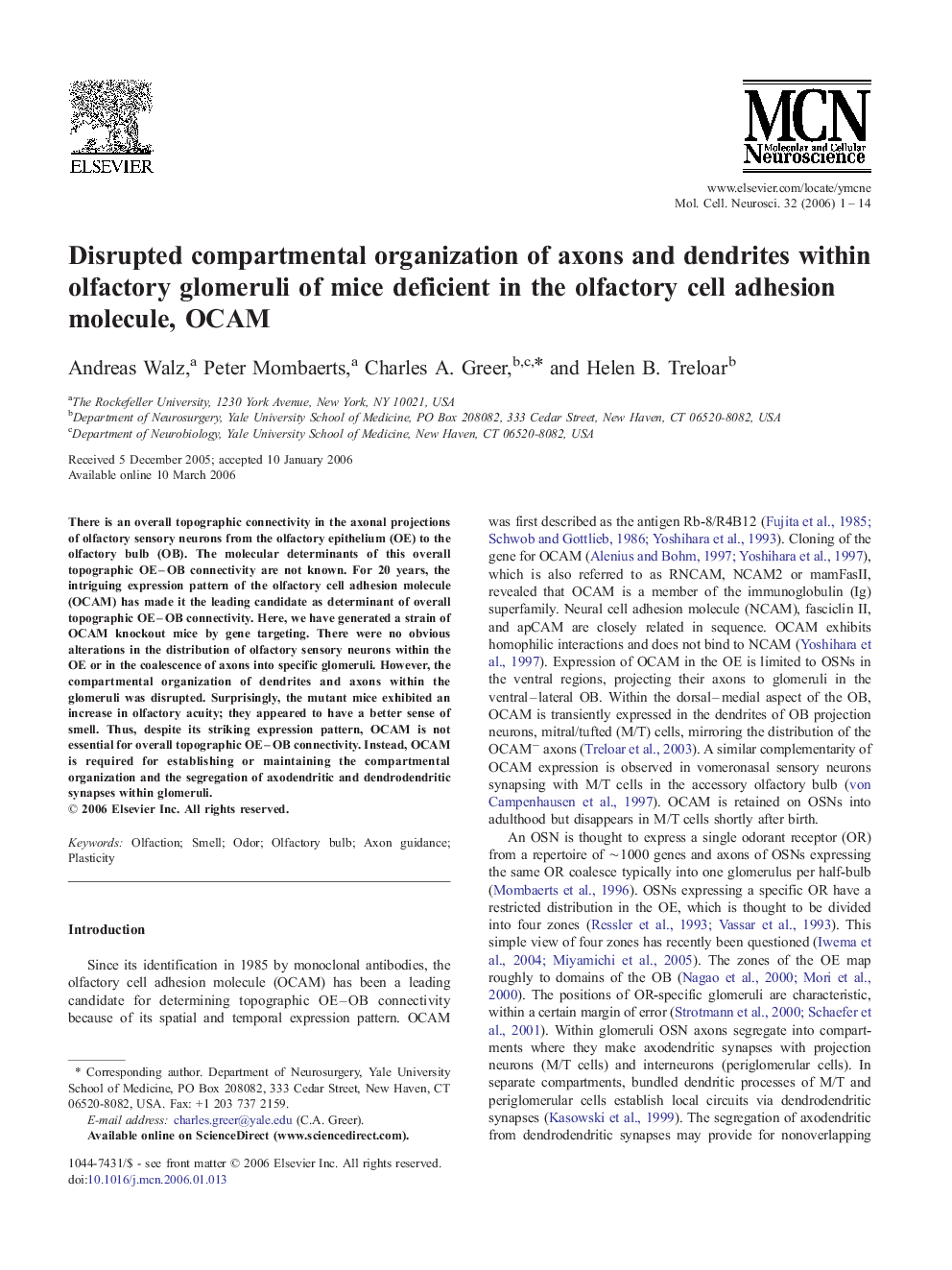| Article ID | Journal | Published Year | Pages | File Type |
|---|---|---|---|---|
| 2199417 | Molecular and Cellular Neuroscience | 2006 | 14 Pages |
There is an overall topographic connectivity in the axonal projections of olfactory sensory neurons from the olfactory epithelium (OE) to the olfactory bulb (OB). The molecular determinants of this overall topographic OE–OB connectivity are not known. For 20 years, the intriguing expression pattern of the olfactory cell adhesion molecule (OCAM) has made it the leading candidate as determinant of overall topographic OE–OB connectivity. Here, we have generated a strain of OCAM knockout mice by gene targeting. There were no obvious alterations in the distribution of olfactory sensory neurons within the OE or in the coalescence of axons into specific glomeruli. However, the compartmental organization of dendrites and axons within the glomeruli was disrupted. Surprisingly, the mutant mice exhibited an increase in olfactory acuity; they appeared to have a better sense of smell. Thus, despite its striking expression pattern, OCAM is not essential for overall topographic OE–OB connectivity. Instead, OCAM is required for establishing or maintaining the compartmental organization and the segregation of axodendritic and dendrodendritic synapses within glomeruli.
